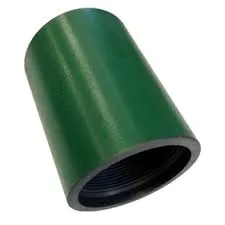- Afrikaans
- Albanian
- Amharic
- Arabic
- Armenian
- Azerbaijani
- Basque
- Belarusian
- Bengali
- Bosnian
- Bulgarian
- Catalan
- Cebuano
- Corsican
- Croatian
- Czech
- Danish
- Dutch
- English
- Esperanto
- Estonian
- Finnish
- French
- Frisian
- Galician
- Georgian
- German
- Greek
- Gujarati
- Haitian Creole
- hausa
- hawaiian
- Hebrew
- Hindi
- Miao
- Hungarian
- Icelandic
- igbo
- Indonesian
- irish
- Italian
- Japanese
- Javanese
- Kannada
- kazakh
- Khmer
- Rwandese
- Korean
- Kurdish
- Kyrgyz
- Lao
- Latin
- Latvian
- Lithuanian
- Luxembourgish
- Macedonian
- Malgashi
- Malay
- Malayalam
- Maltese
- Maori
- Marathi
- Mongolian
- Myanmar
- Nepali
- Norwegian
- Norwegian
- Occitan
- Pashto
- Persian
- Polish
- Portuguese
- Punjabi
- Romanian
- Russian
- Samoan
- Scottish Gaelic
- Serbian
- Sesotho
- Shona
- Sindhi
- Sinhala
- Slovak
- Slovenian
- Somali
- Spanish
- Sundanese
- Swahili
- Swedish
- Tagalog
- Tajik
- Tamil
- Tatar
- Telugu
- Thai
- Turkish
- Turkmen
- Ukrainian
- Urdu
- Uighur
- Uzbek
- Vietnamese
- Welsh
- Bantu
- Yiddish
- Yoruba
- Zulu
steel couplings for pipe
Steel Couplings for Pipe An Overview
Steel couplings are essential components in various piping systems, providing a reliable means of connecting sections of pipe. They play a crucial role in industries such as oil and gas, water and sewage management, and construction. Understanding the types and applications of steel couplings can help in selecting the right solution for a specific project.
Types of Steel Couplings
1. Threaded Couplings These couplings feature internal threads that allow for easy connection of threaded pipes. They are commonly used in low-pressure applications and are favored for their simplicity and ease of installation.
2. Welded Couplings Welded couplings offer a more permanent solution by being welded directly to the pipes. This method creates a strong, leak-proof joint that is ideal for high-pressure applications. However, it requires skilled labor and specialized equipment.
3. Flanged Couplings Flanged couplings have flat surfaces with holes for bolts, allowing for easy connection and disconnection. They are commonly used in large diameter pipes and applications where frequent maintenance is necessary.
4. Compression Couplings Compression couplings utilize a mechanical fastening method to connect two pipes. They are flexible in application and can accommodate different types of materials, making them popular in plumbing and HVAC systems.
steel couplings for pipe

Applications of Steel Couplings
Steel couplings are used in a variety of applications across different industries. In the oil and gas sector, they are crucial for connecting pipes that transport crude oil, natural gas, and other fluids under high pressure. Their robust nature ensures safety and reliability in demanding environments.
In municipal water systems, steel couplings are used to connect water mains and sewer systems. They must be corrosion-resistant and durable to withstand various environmental conditions. The use of galvanized or stainless steel is common in these applications to enhance longevity.
Furthermore, in construction, steel couplings are used in temporary structures and scaffolding systems. Their strength and ability to support heavy loads make them invaluable in ensuring stability during the construction process.
Conclusion
In summary, steel couplings are a vital component in numerous piping systems, providing secure connections that are essential for efficiency and safety. The choice of coupling type depends on the specific requirements of the project, including pressure levels, maintenance needs, and installation conditions. As industries continue to evolve, the development of advanced materials and technology will likely enhance the performance and application of steel couplings, reinforcing their importance in modern infrastructure.
-
Tubing Pup Joints: Essential Components for Oil and Gas OperationsNewsJul.10,2025
-
Pup Joints: Essential Components for Reliable Drilling OperationsNewsJul.10,2025
-
Pipe Couplings: Connecting Your World EfficientlyNewsJul.10,2025
-
Mastering Oilfield Operations with Quality Tubing and CasingNewsJul.10,2025
-
High-Quality Casing Couplings for Every NeedNewsJul.10,2025
-
Boost Your Drilling Efficiency with Premium Crossover Tools & Seating NipplesNewsJul.10,2025







